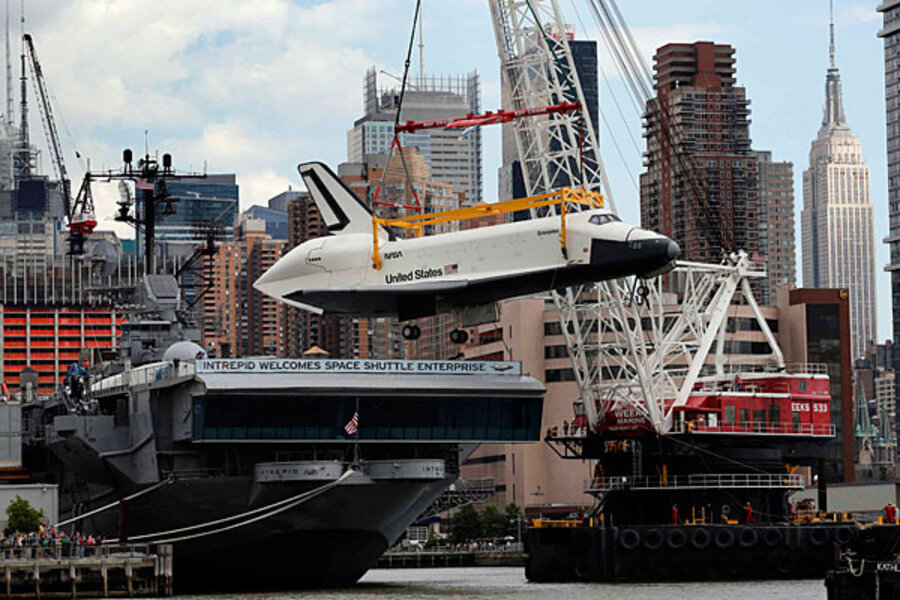Space Shuttle Enterprise arrives in New York. Where will the other shuttles go?
Loading...
The space shuttle prototype Enterprise moved to its new home Wednesday, the flight deck of the Intrepid Sea, Air & Space Museum on the Hudson River in New York.
NASA's three real space shuttles — the ones that rocketed into orbit — also will spend their retirement in museums.
One is already on display. The other two will follow by year's end.
A quick look at each ship:
Discovery: Flown in April to Smithsonian's Udvar-Hazy Center near Washington Dulles International Airport in Virginia, taking the place of Enterprise. Fleet leader with 39 missions. Oldest survivor of the real shuttles. First flight in 1984, 39th and last in February-March 2011. Spent 365 days in space, traveled 148 million miles.
Endeavour: Still at Kennedy Space Center. Will be flown in September to California Science Center in Los Angeles. Youngest shuttle, built as replacement for the destroyed Challenger. First flight in 1992, 25th and last in May-June 2011. Spent 299 days in space, traveled 123 million miles.
Atlantis: Still at Kennedy Space Center. Will be transported down the road to the Kennedy Space Center Visitor Complex in November. First flight in 1985, 33rd and last in July 2011. Spent 307 days in space, traveled 126 million miles.
Enterprise: Flown in April from Smithsonian to New York. Prototype shuttle used in five approach-and-landing tests at Edwards Air Force Base, Calif., in 1977; dropped off back of modified jumbo jets with two-man astronaut crews and guided to landings. Never flew in space nor was it designed to do so. Used in NASA tests and traveling exhibits, then given to Smithsonian in 1985.







